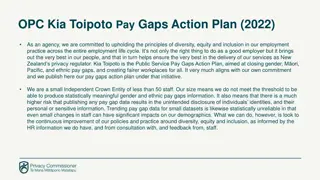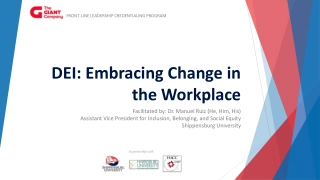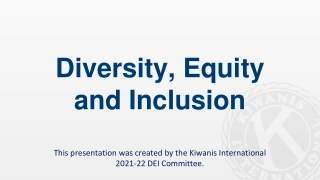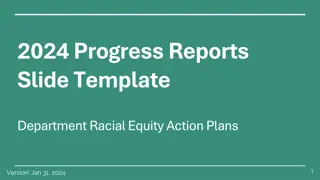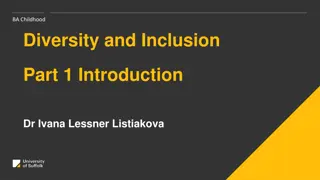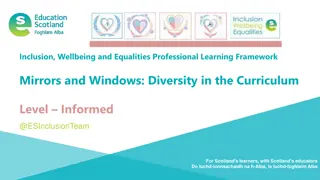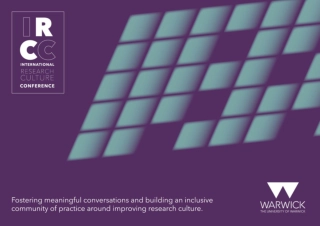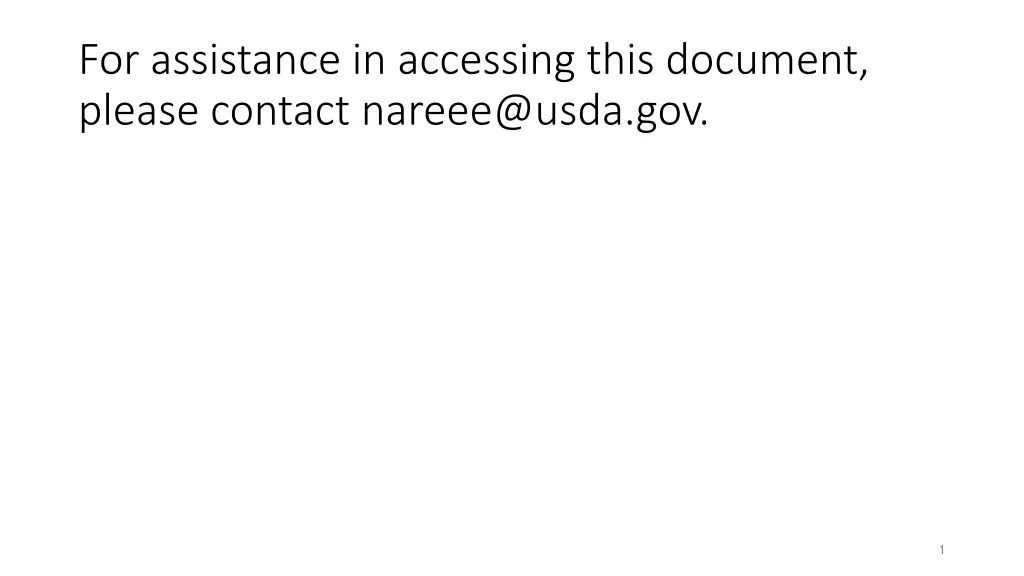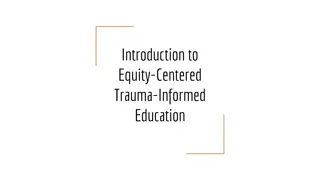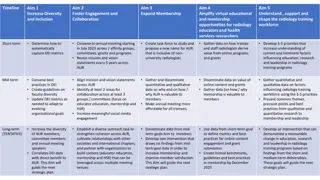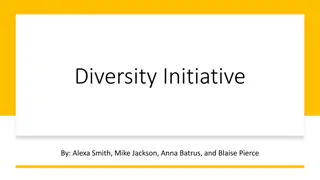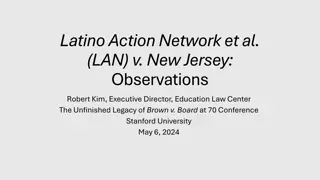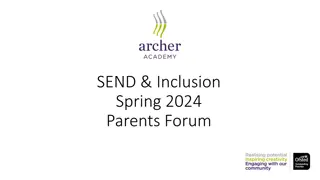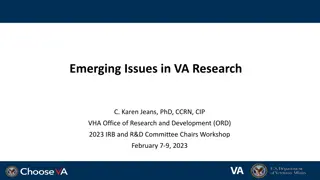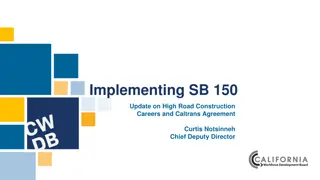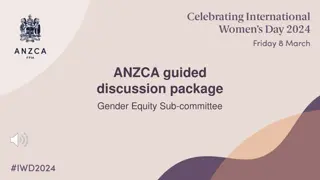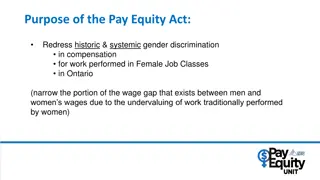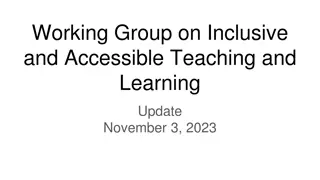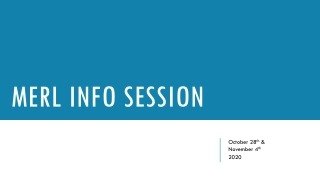Stop talking, take action on diversity, equity and inclusion
DIB initiatives promote diversity, equity, and inclusion in the workplace, driven by goals, accountability measures, and societal pressures. Establishing a DIB strategy involves assessing current diversity, outlining goals aligned with the organization's values, creating action plans, implementing strategies, and emphasizing communication and socialization. Setting up governance ensures roles, policies, metrics, and training to foster a diverse culture. Effective DIB strategies lead to improved morale, retention, and productivity.
- DIB initiatives
- Diversity & Inclusion
- Workplace Diversity
- Organizational Strategy
- Communication & Socialization
Download Presentation
Please find below an Image/Link to download the presentation.
The content on the website is provided AS IS for your information and personal use only. It may not be sold, licensed, or shared on other websites without obtaining consent from the author. Download presentation by click this link. If you encounter any issues during the download, it is possible that the publisher has removed the file from their server.
Presentation Transcript
Stop talking, take action on diversity, equity and inclusion Margot Slattery Global Head of Diversity, Inclusion and Belonging at ISS Webinar 1
What is DEI? Why is it important? 2 2 2
DIB initiatives aim to create a more diverse, equitable, and inclusive workplace. Diversity, Inclusion & Belonging Organisations recognize the benefits of DIB/DIE, including improved innovation, increased employee satisfaction, and better financial performance. Corporate governance plays a key role in driving DIB/DIE initiatives through diversity and inclusion goals and accountability measures. Regulatory and societal pressures have also contributed to the rise of DIB initiatives. DIB initiatives may include recruiting from diverse talent pools, training and education programs, employee resource groups, and diversity metrics tracking. 3
Building a DIB strategy for an organisation Assess the current state of diversity, inclusion, and belonging in the organization through data collection, surveys, and focus groups. Define the organization s DIB goals and objectives based on the assessment results and align them with the organization's overall mission and values. Develop a DIB action plan that outlines the steps to achieve the defined goals, such as recruitment and retention strategies, employee training and development programs, and culture change initiatives. Implement the DIB action plan and establish metrics and performance indicators to measure progress and success. 4 4
The importance of communication and socialisation Communication and socialisation of an organization s DIB strategy are essential to ensure all employees understand the organisation's commitment to diversity, inclusion, and belonging. Socialisation involves integrating the DIB strategy into all aspects of the organisation, including policies, practices, and decision-making processes. Employee engagement and feedback mechanisms should be established to foster a two-way communication process. Communication should be ongoing and involve multiple channels, including email, company newsletters, social media, and employee meetings. Effective communication and socialisation of the DIB strategy can help to foster a positive workplace culture that values diversity and inclusion, leading to improved employee morale, retention, and productivity. 5 5
Setting up a DIB governance at an organisation Establish a governance structure, define roles and responsibilities Develop policies and procedures, integrate DIB goals and metrics into the strategic plan Create a reporting framework, provide training and education Foster a culture of diversity, and continuously evaluate and refine the framework. 6
DIB governance at ISS as an example Global DIB Committee Global DIB Team DIB Council, Europe and UK&I DIB Council, APAC DIB Council, Americas Global DIB Community ERG Gender Balance ERG Generations & Age ERG Cultures, Race & Ethnicity ERG Pride ERG - Abilities 7
DIB partnerships How to manage partnerships effectively? Why is it important? Establish clear goals and objectives, roles and responsibilities, and communication protocols. Partnerships can help organisations to leverage expertise, resources, and networks to advance their DIB goals. Develop a shared vision and values that align with both organisations and establish regular meetings and reporting mechanisms to track progress. Partnerships can also help organisations to learn from others, share best practices, and collaborate on joint initiatives. Create opportunities for joint initiatives, such as diversity recruitment fairs, joint training and development programs, and diversity and inclusion events. Celebrate and promote successes together, and recognize and address challenges and barriers as they arise. 8
Keep things refreshed Keep abreast of emerging DIB trends, research, and best practices to identify new opportunities Engage with external stakeholders, such as customers, suppliers, and industry groups Establish partnerships with universities, research institutions, and think tanks to access cutting-edge expertise Promotion of DIB principles enhances respect for human rights, fosters social justice, and contributes to a more stable and equitable geopolitical landscape Encourage employees to attend industry conferences and events to stay up-to-date on the latest DIB developments 9
How we understand DIB at ISS + = DIVERSITY INCLUSION BELONGING [Facts] [Choice] [Inclusive culture] Diversity is about the unique characteristics, life experiences, and perspectives seen and unseen that make us who we are as individuals and as groups of people. Inclusion is about valuing and respecting differences and seeing those as essential for success. To create an environment, where all people are respected and included. Belonging is when employees feel they can bring their authentic selves to work. This is when differences are embraced and valued. 10
Our strategy is driven by five dimensions of diversity Generations & Age Cultures, Race & Ethnicity Pride Abilities Gender Balance There are currently 5 generations in the workplace. We will focus on generational inclusion and challenge age biases and stereotypes. Covering all imaginable differences among cultures, including ethnicity, language, race, religion, indigenous people, refugees etc. This dimension is about all expressions of sexual orientation, gender and relationship- and family models along with openness, curiosity and inclusion towards those. Disabilities can be broken into 8 sub- categories, seen and unseen. We will create workplaces that are inclusive and accessible towards all abilities. We will enable gender balance across our organisation, including a focus on balanced representation of gender within senior leadership. 11
Main External Partnerships To create a more inclusive workplace for LGBTQ+ employees by implementing policies and practices that are respectful of all employees Ensure accessible workplaces, both physically and digitally [ By 2025, we aim to achieve at least 40% gender balance at the group leadership level We wish to hire refugees and support the economic inclusion of refugee women by offering workshops, apprenticeships and information sessions We are providing opportunities for young people through apprenticeships, internships, and entry-level jobs 12
Overview of Internal Partnerships We collaborate with more than 30 countries across 3 regions to achieve our goals Our 5 global ERGs are essential partners in our efforts Our EGM members provide valuable sponsorship and support We have established a global DIB community to promote the importance of DIB We share DIB initiatives and activities across the organisation through our SharePoint site 13
Social efforts and activities are valuable and make a significant difference for individuals, businesses, and society as a whole. Every individual has the potential to contribute to the success of an organisation. Therefore, we should broaden our recruitment and talent development approach to identify and embrace unique competencies. By leveraging the strength and knowledge of everyone, we can collectively make positive social changes.
Thank you info@thecorporategovernanceinstitute.com www.thecorporategovernanceinstitute.com 16


